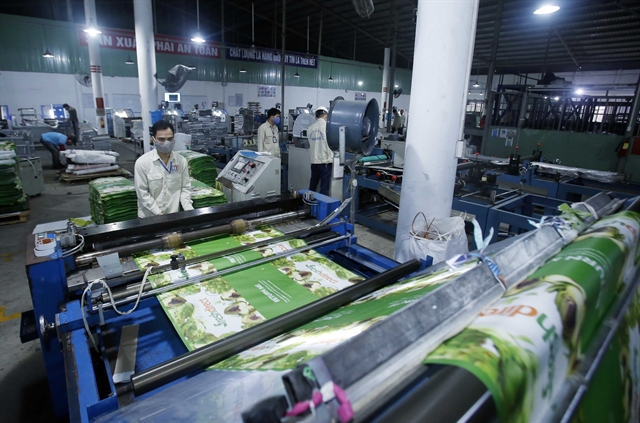 Opinion
Opinion


|
| A packaging production line of a company in the northern province of Hưng Yên. Enterprises must improve their capacity to adapt to changes caused by COVID-19. VNA/VNS Photo Phạm Kiên |
Trương Thanh Hoài, head of the Industry Department of the Ministry of Industry and Trade talks to Hải Quan (Customs) newspaper about businesses adapting to COVID-19’s impacts
What impacts has COVID-19 had on industrial production?
COVID-19 has posed challenges to global production chains. Countries with strong domestic production chains will be able to minimise the impacts of incidents, especially natural disasters and diseases, on production.
I think they can minimise the impacts but not avoid them all. Countries and sectors depend largely on each other. No country can organise the production chain independently.
One of the visible impacts on Việt Nam is on electronics and automobiles. These industries need high tech and specific technical components made by brands and multinational corporations.
Industries with complex supply chain structures like automobiles or electronics require component suppliers who meet specific technical standards. When the supply chain is interrupted, it is difficult to find a replacement.
Other industries with simpler supply chains like textiles and footwear can find other sources of supply. If companies only makes the products based on orders, they must seek alternative materials supplying sources.
If the firms manufacture the whole products for brands, it will be more difficult to find and replace the supply.
What opportunities has COVID-19 brought to Việt Nam’s industrial production?
There are many opportunities. In the context of US-China trade war and COVID-19, multinational corporations have realised there should be a strategy called ‘China plus 1’. If everything is put into the ‘basket’ of China, corporations will face major risks.
For example, about 100 enterprises in the world's top 500 enterprises have a presence in Wuhan, China.
The pandemic has enormously affected the production chains of corporations. To avoid risks, they will have to relocate their supply systems to surrounding areas. China is the world's factory but China is also the world's leading consumption centre with high potential to grow.
In the near future, China will develop its services and income per capita will increase. Factories will gradually move out of China.
Meanwhile, Việt Nam has a very favourable geographical position with close proximity with China, young population, stable politics and friendly investment attraction policies.
In my opinion, Việt Nam will have great opportunities to attract investment if we take stronger measures to reform administrative procedures and improve the business climate.
Boosting the supporting industries is seen as key to attracting investment in Việt Nam’s industrial production and help the country avoid lacking supplies. How does the Ministry of Industry and Trade plan to develop the supporting industries?
Developing supporting industries is a consistent policy of the Party, the Government and the Ministry of Industry and Trade.
However, supporting industries need capital and technology. Vietnamese enterprises have low starting points with very low production capacity so are unable to meet the requirements of domestic and global production chains.
Along with investment attraction policies, it is necessary to improve the capacity of domestic enterprises. To do that, we need efforts of the enterprises and the Government.
The Ministry of Industry and Trade has compiled policies to help businesses improve their capacity. Has the ministry prepared scenarios to recover production after the pandemic?
The global production chain depends on each other.
The pandemic might end in one place but could break out in another place.
How long the pandemic will last is unknown. It is difficult to prepare scenarios if we are not sure about that.
At present, it is important to determine solutions and resources to support enterprises.
During this time, businesses must maintain factories and workers but without revenue.
We must urgently support enterprises, especially those in sectors with a large number of workers like textiles and footwear.
If businesses are not assisted to overcome difficulties, the impacts could be huge for social security. — VNS




